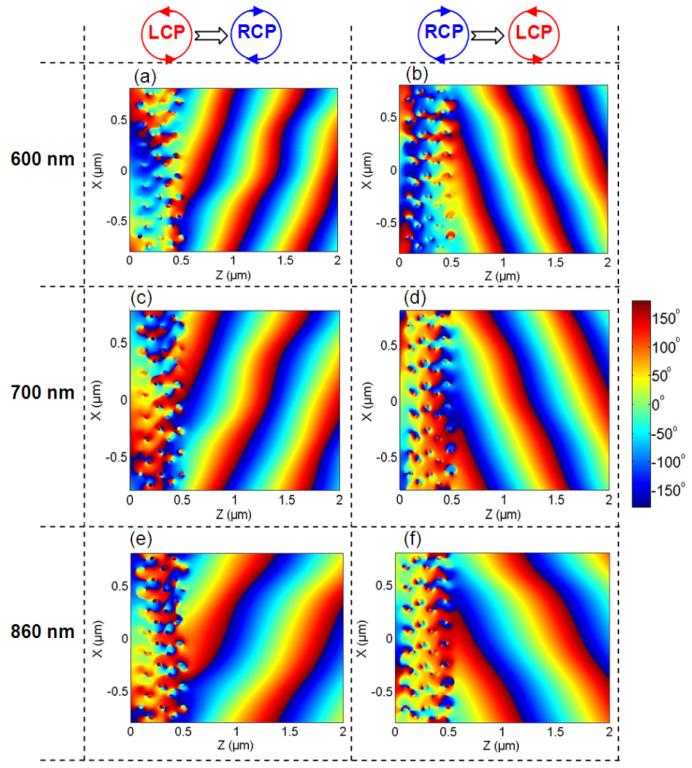Helical metamaterials, a kind of 3-dimensional structure, has relatively strong coupling effect among the helical nano-wires. Therefore, it is expected to be a good candidate for generating phase shift and controlling wavefront with high efficiency. However, as far as we know, there is very little work in this aspect.
In this paper, using the finite-difference time-domain (FDTD) method,professor Zhenyu Yang and his groupstudied the phase shift properties in the helical metamaterials. It is found that the phase shift occurs for both transmitted and reflected light waves. And the maximum of reflection coefficients can reach over 60%. In addition, the phase shift (φ) is dispersionless in the range of 600 nm to 860 nm, that is, it is only dominated by the initial angle (θ) of the helix. The relationship between them is φ=±2θ. Using Jones calculustheygive a further explanation for these properties. Finally, by arranging the helixes in an array with a constant phase gradient, the phenomenon of anomalous refraction was also observed in a broad wavelength range.
This work has been published inOPTICS EXPRESS [24(16), pp. 18266–18276 (2016)].We acknowledge the support by the Natural Science Foundation of China (NSFC) (61475058, 11104094), Wuhan science and technology project (2015010101010001),Shenzhen basic research project (JCYJ20140419131733980), andOpen fund of the state key laboratory of high performance complex manufacturing (Kfkt2013-07).

Fig.1. The amplitude conversion and phase shift of the transmitted light. (a) and (b): The transmitted LCP light with the RCP light incidence; (c) and (d): The transmitted RCP light with the LCP light incidence.

Fig.2. The reflection coefficient and phase shift of the reflective light. (a) and (b): The reflective RCP light with the RCP light incidence; (c) and (d): The reflective LCP light with the LCP light incidence.

Fig.3. The equal phase surface of the electrical field in the anomalous refraction. (a), (c), and (e): RCP transmitted waves with the LCP wave excitations whose wavelengths are 600 nm, 700 nm, and 860 nm, respectively; (b), (d), and (f): LCP transmitted waves with the RCP plane wave excitations whose wavelengths are 600 nm, 700 nm, and 860 nm, respectively.